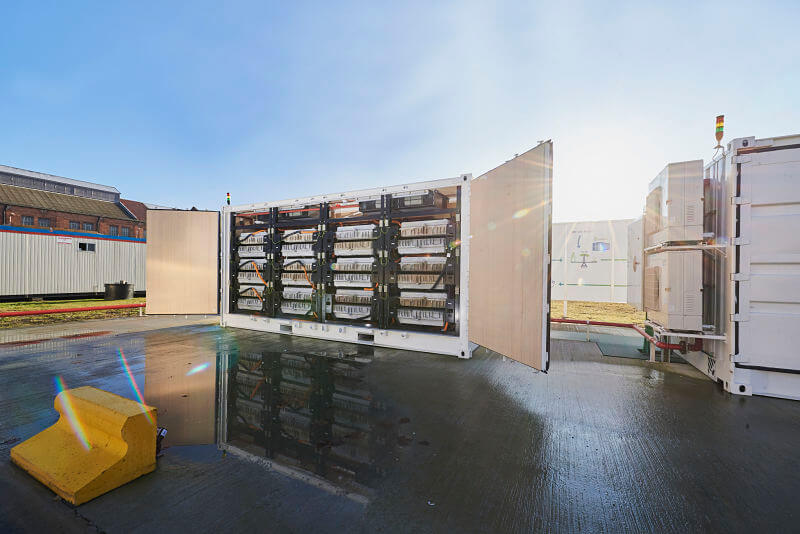
A powerful second chance at life: From commercial vehicle usage to powering battery recycling in Belgium.
North east based Connected Energy is celebrating after the commissioning of its largest second-life battery energy storage system to date. The system has now been handed over to London headquartered Kiwi Power, to operate and optimise in real-time.
The E-STOR system, installed at the Umicore industrial site in Belgium, uses Renault batteries which previously powered Kangoo vehicles in France. Their second life as part of a static energy storage solution is expected to give another seven years when the value of the embedded natural resources can be utilised.
Connected Energy and Groupe Renault signed a deal in 2016 to collaborate on second-life battery energy storage technology.
“The collaboration with Connected Energy, which has been ongoing for three years is the beginning of a great story. Indeed, all customers confirm that our second-life batteries are very appropriate for these energy storage applications. It shows the relevancy of all the efforts done by Groupe Renault and its partners to transform the market for the next years.” explains Amaury Gailliez, Batteries Operation & Business Director, Groupe Renault.
The batteries in the E-STOR have a combined energy storage capacity of 720 kWh and can deliver 1.2MW in power. The Belgian system provides revenue generation and power quality management for global materials technology and recycling group Umicore who also recycle EV batteries.

Connected Energy specialises in developing award-winning energy storage solutions that use electric vehicle batteries which have ended their traditional first life.
The Umicore E-STOR system is developed to provide firm frequency response. “The world’s moving away from a centralised energy model with large carbon intense generation like coal power plants,”explained Matthew Lumsden, Connected Energy CEO. “Instead we’re seeing a distributed renewables energy setup, with many renewable energy sites across countries as opposed to fewer, larger facilities. These renewable energy sources have their own volatilities that impact on grid frequency – a problem energy storage can help solve.”
The grid needs to stay at a consistent level of 50Hz in order to maintain stability; if more energy is created then the demand needs to increase. Conversely if less is generated then the load on the network needs to be reduced. “Our new firm frequency response E-STOR systems work with grid operators, via third party aggregators, to balance energy usage,” said Matthew. “This provides a stable solution for grid operators and customers alike. The grid achieves greater stability, customers enjoy improved power quality and we achieve this without any additional environmental impact from new battery production.”
If you’re working on a similar project, or want to find our more, get in touch with the Kiwi Team.